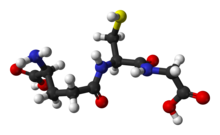Is NAC Effective in the Treatment of COVID-19?

N-acetylcysteine (NAC)
We as medical professionals are working hard to improve outcomes in patients with COVID-19. In addition to trials on drugs and other procedures it is important to recognize other options. Working to promote the body’s own healing response using knowledge of molecular biology, biochemistry and physiology is foundational. Using naturally occurring molecules often provides a good benefit-risk ratio because there are fewer side effects as well as little or no toxicity. High-dose intravenous vitamin C is currently a very good example of this. N-acetylcysteine (NAC) is another treatment that deserves to be tried because it is specific for lung function.
When the lungs are infected by COVID-19, an immune system storm occurs called the cytokine storm. This is an important occurrence for an aggressive immune response. However, in some individuals it will destroy not only virus infected cells but also the normal cells; specifically cells of the lungs, heart and kidneys. Heart and kidney damage are now being reported as a consequence of the infection. If a patient is especially frail or the immune system responds over aggressively, then the immune response can almost be as bad as the infection. A recent article, from the prestigious publication The International Journal of Cardiology, has recommended natural antioxidants to help mitigate this complication. In this article they recommend vitamin C, vitamin E and Curcumin specifically, but also state that all antioxidants given at a proper dose could be potentially beneficial. I think NAC should also be included.
What is NAC or N-acetylcysteine?
NAC is a sulfur containing amino acid and glutathione precursor. Glutathione is an important antioxidant the body makes directly from NAC. Conditions such as idiopathic pulmonary fibrosis (IPF), pneumonia and COPD are characterized by excessive inflammation and depleted glutathione levels. Clear data exists in the medical literature that glutathione levels increase when NAC is taken orally. NAC is also approved to treat acute toxic liver injury in a hospital setting such as ingestion of poisonous mushrooms or overdose of Tylenol. The FDA approved inhaled preparation of NAC, called Mucomyst, can decrease the viscosity of mucus making it easier to expectorate and preventing further lung complications. On a side note for athletes, NAC has been proven in some studies to increase exercise performance.
NAC has already been studied in lung diseases. The lungs are subject to significant oxidative stress because of the direct interaction with oxygen (an oxidant) and environmental toxins such as particulate matter from exhaust and ozone. Glutathione deficiency and resulting oxidative injury have been demonstrated and proposed as causative factors in chronic obstructive pulmonary disease (COPD) and adult respiratory distress syndrome (ARDS). Currently COVID-19 patients are being treated as if they have ARDS. NAC has been proven to improve all aspects of lung function, decrease exacerbation rate of COPD and slow progression of idiopathic pulmonary fibrosis (IPF). Over 21 controlled trials have been conducted on its use for IPF.
I am not the only medical professional looking into the use of NAC. Dr. Steven Quay, MD, PhD of Seattle is leading a critical trial, called the HOPE trial, using inhaled NAC administered through the ventilator. He hopes to reduce or eliminate the need for mechanical ventilations in patients with COVID-19.
While we wait for the results of this trial, let’s try to prevent needing to be on a ventilator in the first place. Ideally NAC is taken under medical supervision. Although the studies are still underway and we are awaiting the data, NAC is considered very safe at normal doses. NAC should be taken with food. It is also important to note that high doses may interfere with kidney function blood tests, specifically the marker creatinine. This is not dangerous at all and is probably the result of improved kidney function.

